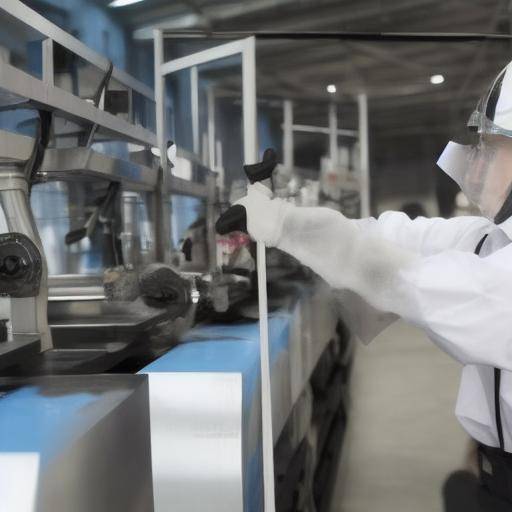
The temperature of the working environment is a fundamental factor that significantly influences productivity. We have all experienced how cold or excessive heat can affect our concentration and efficiency at work. In this article, we will explore in depth the relationship between the temperature of the working environment and productivity, analyzing its impact on the work performance, health and well-being of employees, as well as offering practical advice to optimize the temperature in the workplace.
Introduction
The working environment is a determining factor in the efficiency and well-being of workers. Temperature plays a crucial role in this environment, as it can influence aspects such as the concentration, fatigue and comfort of employees. Therefore, understanding how the working environment temperature affects productivity is essential to promoting optimal working conditions.
In this article, we will explore the importance of maintaining an adequate temperature in the workplace, the positive and negative effects of extreme temperatures, as well as strategies to optimize the working environment and maximize employee productivity.
History and Background
To fully understand the influence of temperature in the working environment, it is important to examine its relevance throughout history. From the first industrial factories to modern office spaces, temperature control has been a constant challenge.
The emergence of heating and cooling systems is closely related to the evolution of the working environment. The Industrial Revolution marked a turning point, leading to the implementation of heat systems in working environments to counter harsh weather conditions. Over time, understanding the influence of temperature on productivity has been increasing, leading to the adoption of regulations and standards to regulate thermal conditions in workplaces.
Analysis in Deep
Benefits of a Suitable Labor Environment
Keeping an optimal temperature in the working environment is not only beneficial for the comfort of the workers, but also has a direct impact on productivity. Studies have shown that moderate temperatures can improve concentration, reduce fatigue and decrease the number of errors in complex tasks. In addition, a warm and comfortable environment fosters a positive working atmosphere, which can contribute to greater commitment by employees.
Challenges in Temperature Control
Despite the obvious benefits, maintaining an adequate temperature in the working environment also presents challenges. The variability in temperature preferences among individuals, the energy costs associated with temperature control, and the difficulty in balancing the air conditioning in shared spaces are just some of the challenges that companies face when trying to ensure an optimal thermal environment.
Comprehensive review
Strategies for Optimizing Labor Environment Temperature
There are several strategies that companies can implement to optimize temperature in the workplace. These range from adjustments in air conditioning systems to the implementation of flexible clothing policies that allow employees to adapt to thermal variations. Also, the identification of thermal comfort zones and the education of practices to maintain a pleasant temperature are key aspects to be taken into account.
Impact on Health and Welfare
The temperature of the working environment not only affects productivity, but also has implications for the health and well-being of workers. Exposure to extreme temperatures can contribute to thermal stress, increase the risk of dehydration or heat strokes, and generate general discomfort. On the other hand, excessively cold environments can lead to circulatory and muscular problems. It is essential to raise awareness of the importance of maintaining an adequate temperature to prevent health risks.
Comparative analysis
By comparing high and low temperatures in the working environment, it is clear that both extreme heat and cold can reduce the productivity and comfort of employees. While heat can cause fatigue, dehydration and distraction, excessive cold can affect fine motorbike, cause discomfort and contribute to lack of concentration. In both cases, productivity is compromised, which underlines the importance of maintaining a balanced and comfortable temperature in the workplace.
Practical Tips and Recommendations
For High Temperatures:
- Maintain adequate hydration through the availability of drinking water.
- Implement short and frequent breaks to rest in weathered environments.
- Ventilate workspaces to promote air circulation.
- Adjust working hours to avoid the hottest hours of the day.
For Low Temperature:
- Provide adequate clothing to protect yourself from the cold.
- Ensure proper heating in the workspaces.
- Promote mobility and physical activity to maintain body heat.
- Have hot drinks to promote the feeling of comfort.
Industry Perspectives and Expert Reviews
According to experts in ergonomics and occupational health, the temperature control of the working environment is essential to guarantee the health, well-being and productivity of workers. Organizations that prioritize temperature optimization not only benefit their employees, but also experience improvements in the operational efficiency and quality of the work done.
Case Studies and Practical Applications
Several companies have implemented successful strategies to manage temperature in the working environment. Whether through intelligent air conditioning systems, flexible timetable policies during heat waves or thermal control training programs, these study cases demonstrate the relevance and tangible benefits of maintaining an adequate temperature in the workplace.
Future Trends and Predictions
As awareness of the importance of temperature in the working environment continues to increase, companies are expected to adopt more personalized approaches to thermal control, taking into account individual variations of thermal comfort. The integration of intelligent technologies, such as adaptive air conditioning systems and portable devices for thermal monitoring, also promises to revolutionize temperature management in the working environment.
Conclusion
In conclusion, the temperature of the working environment has a significant influence on the productivity and well-being of employees. Keeping an optimal temperature not only improves job performance, but also contributes to a healthier and more comfortable working environment. By prioritizing strategies to optimize temperature and consider the individual needs of workers, organizations can enhance their performance and promote a positive working environment.
Frequently asked questions
How does the temperature influence the concentration of workers?
The temperature influences the concentration of the workers, with moderate temperatures being the most conducive to concentration. Excessive heat and extreme cold can distract and negatively affect productivity.
What temperature level is considered optimal in the working environment?
It is considered that a temperature between 20°C and 24°C is ideal for the working environment, although it is important to consider individual preferences and adaptability of spaces.
How can individual temperature preferences be balanced in shared spaces?
An effective strategy is to implement thermal comfort zones that allow employees to adjust the temperature in their work areas individually, always within reasonable ranges.
What are the health risks associated with extreme temperatures in the working environment?
Risks include thermal stress, dehydration, heat strokes, circulatory problems, and general discomfort, among others. It is essential to address these risks to safeguard the health and well-being of workers.
What is the economic impact of maintaining an adequate temperature in the working environment?
Although temperature control carries energy costs, benefits in terms of productivity, well-being and talent retention far exceed investments in thermal optimization.
How does temperature influence the efficiency of certain labor tasks?
The temperature can influence the efficiency of tasks that require motor concentration, precision and coordination. Tasks such as manual work, mathematical operations or reporting may be affected by extreme temperatures.
In short, understanding the impact of temperature on the working environment and its relation to productivity is essential to creating healthier and more efficient working environments. By implementing strategies to maintain optimal temperature, companies can promote productivity, the well-being of their employees and achieve outstanding work performance.






















































